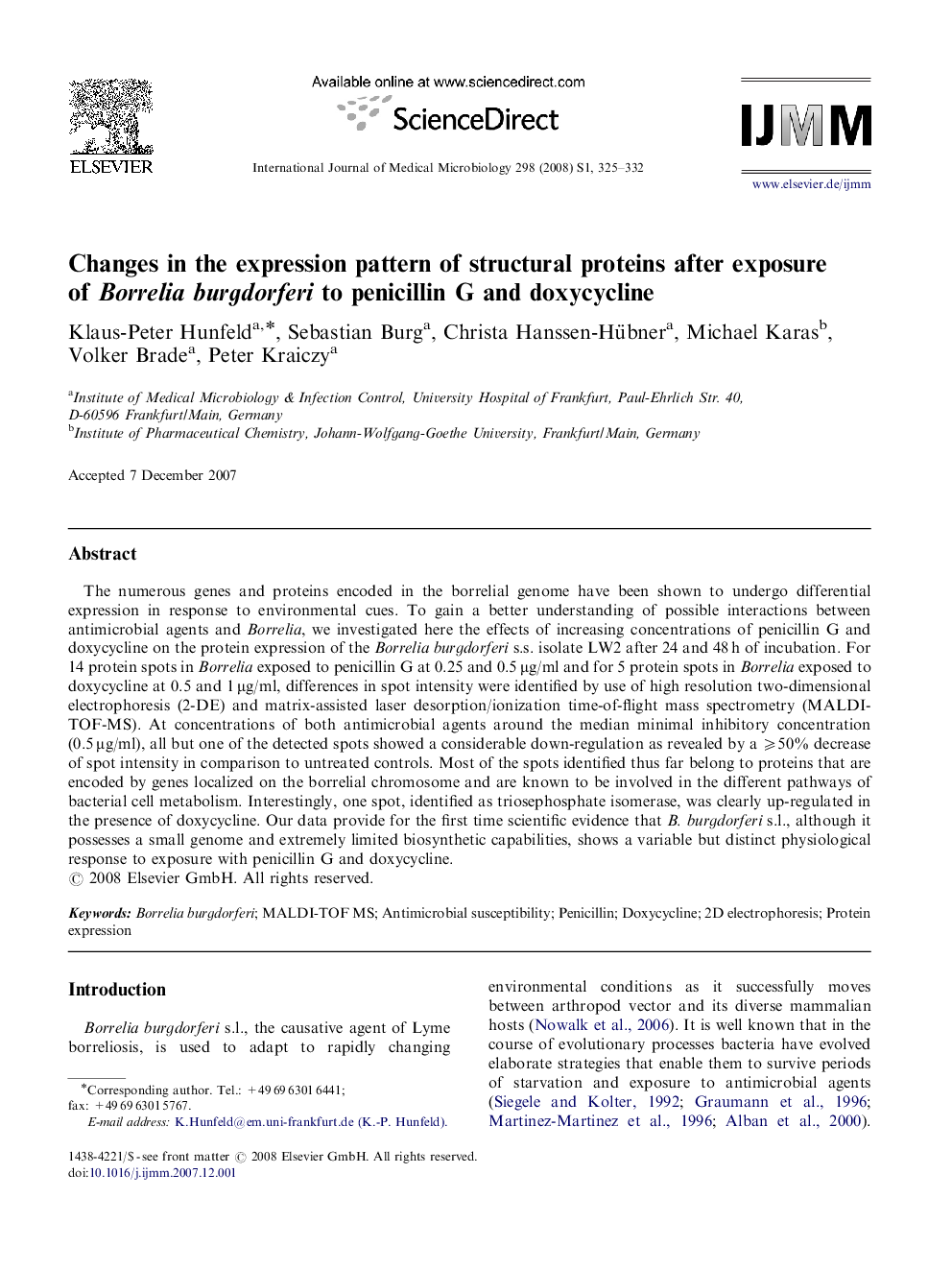| Article ID | Journal | Published Year | Pages | File Type |
|---|---|---|---|---|
| 2054991 | International Journal of Medical Microbiology | 2008 | 8 Pages |
Abstract
The numerous genes and proteins encoded in the borrelial genome have been shown to undergo differential expression in response to environmental cues. To gain a better understanding of possible interactions between antimicrobial agents and Borrelia, we investigated here the effects of increasing concentrations of penicillin G and doxycycline on the protein expression of the Borrelia burgdorferi s.s. isolate LW2 after 24 and 48 h of incubation. For 14 protein spots in Borrelia exposed to penicillin G at 0.25 and 0.5 μg/ml and for 5 protein spots in Borrelia exposed to doxycycline at 0.5 and 1 μg/ml, differences in spot intensity were identified by use of high resolution two-dimensional electrophoresis (2-DE) and matrix-assisted laser desorption/ionization time-of-flight mass spectrometry (MALDI-TOF-MS). At concentrations of both antimicrobial agents around the median minimal inhibitory concentration (0.5 μg/ml), all but one of the detected spots showed a considerable down-regulation as revealed by a ⩾50% decrease of spot intensity in comparison to untreated controls. Most of the spots identified thus far belong to proteins that are encoded by genes localized on the borrelial chromosome and are known to be involved in the different pathways of bacterial cell metabolism. Interestingly, one spot, identified as triosephosphate isomerase, was clearly up-regulated in the presence of doxycycline. Our data provide for the first time scientific evidence that B. burgdorferi s.l., although it possesses a small genome and extremely limited biosynthetic capabilities, shows a variable but distinct physiological response to exposure with penicillin G and doxycycline.
Keywords
Related Topics
Life Sciences
Biochemistry, Genetics and Molecular Biology
Biochemistry, Genetics and Molecular Biology (General)
Authors
Klaus-Peter Hunfeld, Sebastian Burg, Christa Hanssen-Hübner, Michael Karas, Volker Brade, Peter Kraiczy,
